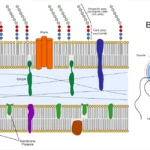IB Biology 36 Views 1 Answers
How did Rosalind Franklin’s careful observations through X-ray diffraction contribute to the discovery of DNA’s double-helix structure?
How did Rosalind Franklin’s careful observations through X-ray diffraction contribute to the discovery of DNA’s double-helix structure?
Answered
Rosalind Franklin’s careful observations through X-ray diffraction were instrumental in the discovery of DNA’s double-helix structure. Here are the key contributions and conclusions drawn from her work:
Key Contributions of Rosalind Franklin
- X-Ray Diffraction Technique:
- Franklin utilized X-ray diffraction to study the crystalline structure of DNA. This technique involves directing X-rays at a crystallized sample, which produces a diffraction pattern that reveals information about the arrangement of atoms within the molecule.
- Photo 51:
- The most famous X-ray diffraction image, known as Photo 51, was taken by her graduate student Raymond Gosling in May 1952. This image showed a distinct “X” pattern, which was crucial evidence indicating that DNA is helical in nature. The clarity of this photograph was a result of Franklin’s meticulous methods, including controlling humidity and using high-quality DNA samples to produce clearer diffraction patterns.
- Determining DNA Dimensions:
- From the diffraction pattern observed in Photo 51, Franklin was able to deduce several critical dimensions of the DNA molecule, such as its helical structure, diameter, and the spacing between base pairs. She concluded that there were approximately ten base pairs per turn of the helix, which provided essential data for constructing a model of DNA.
- Differentiating DNA Forms:
- Franklin distinguished between two forms of DNA: the A-form and B-form. Her work demonstrated that the B-form is the more stable structure under physiological conditions, which ultimately contributed to understanding how DNA functions in biological systems.
- Influence on Watson and Crick:
- Although she did not directly collaborate with James Watson and Francis Crick, her findings significantly influenced their development of the double-helix model. Wilkins showed Photo 51 to Watson without Franklin’s knowledge, leading Watson to recognize the implications of the helical structure for DNA’s function and replication.
Conclusions Drawn from Her Observations
- Helical Structure Confirmation:
- The distinctive “X” shape in Photo 51 indicated that DNA is a double helix, confirming earlier hypotheses about its structure and suggesting that it consists of two intertwined strands.
- Implications for Genetic Function:
- The regularity and symmetry observed in the diffraction pattern suggested that DNA has a consistent structure, which is essential for its role in genetic information storage and transmission.
- Foundation for Model Building:
- Franklin’s precise measurements provided critical parameters that Watson and Crick used to construct their famous model of DNA, which was published in 1953.
Did this page help you?




